Matthew Henson
Though ignored at the time, history has discovered the true contributions of Matthew Henson, the co-discoverer of the North Pole along with Rear Admiral Robert Perry.
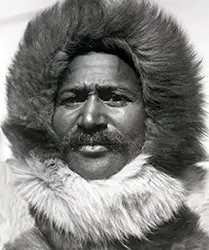
Matthew Alexander Henson was born on August 8, 1866 in Nanjemoy, Maryland, about 30 miles from Washington, DC. His parents were sharecroppers who were free people of color before the Civil War. His mother passed away when Matthew was two years old and his father remarried. In 1870 the family moved to Washington, DC, but when his father died, Matthew was sent to live with his uncle. His experience in Washington was very positive as his uncle took a great deal of interest in his education, paying for it for several years. When his uncle died, however, Matthew had to support himself and got a job as a dishwasher.
He was still young at only twelve years of age when he journeyed to Baltimore, Maryland and was hired on as a cabin boy on the merchant ship Katie Hines. Captain Childs was in charge of the ship and took an interest in Henson, teaching him about the ship as well as how to read and write.
Matthew sailed around the world with the Captain for several years, gaining experience as a crewman on the ship and learning about countries all over the world. Visiting Europe, Asia, Africa and southern parts of Russia, Henson was exposed to the cultures and languages of the different regions, knowledge that would benefit him in years to come. Captain Childs also taught him the principles of basic navigation, setting the stage for Matthew to become an excellent seaman.
After Captain Childs death in 1883, Henson returned to Washington, DC where he found work in a furrier clothing store. It was there that he happened to make the acquaintance of Commander Robert E. Peary. in 1884 Perry had been ordered by the United States Navy Corps of Engineers to do a survey for the proposed Nicaragua Canal. In preparing to go south, he had stopped in the clothing store to purchase a sun hat and to sell some of the seal and walrus pelts that he had collected on his travels to Greenland. He struck up a conversation with Matthew, both relating tales of their travels. Peary was surprised to hear of Henson’s vast experience for someone only 18 years old. Having served on a ship for six years as a cabin boy, Henson had much of the skill-set that Peary needed and the Commander asked Matthew to join him as his personal valet. During their two years together in Central America, Peary told Henson of his desire to explore the Arctic circle, and it became a goal for Henson too as the two would explore together for the next 20 years. Because Peary was stationed in Philadelphia, he got a job for Henson as a messenger at the League Island Navy Yard in Philadelphia, thus keeping Matthew close by as Peary contemplated his next travels. The life of an explorer was very difficult on families in those days as evidenced by the fact that in the first 23 years of his marriage, Perry spent only three with his family. Thus, it came as no surprise that Henson’s first marriage to Eva Flint unraveled. He remarried in 1906, this time to a woman named Lucy Jane Ross.
Henson traveled with Peary to explore parts of Greenland in 1891, but by the end of the journey all of the other members of the team had abandoned the venture, leaving Peary and Henson alone. They traveled again to Greenland in 1895 but this trip turned into a disaster as the team almost starved to death, surviving by eating all but one of the sled dogs. During their travels, Henson’s familiarity with different cultures and dealing with different languages allowed him to befriend the Inuit, the indigenous people inhabiting the Arctic regions (often referred to in the past as Eskimos). Henson eventually mastered the Inuit language and they treated him as a favored friend, calling him Mahri-Pahluk (meaning “Matthew the Kind One”). This was crucial to his and Perry’s expeditions because the Inuit were familiar with the territory and the terrain. They trained him to drive the dog sled and to train the sled dogs in the Inuit way and viewed him as the only non-Inuit who could do so. He further insinuated himself into the Inuit as he took an Inuit woman as a concubine and fathered a son named Anauakaq. He also regarded himself as a craftsman and his capabilities came in handy, whether for repairing parts of their vessels or sleds or in building igloos as shelter in the harsh Arctic conditions. This came in handy as they journeyed out on in 1906 to the Farthest North point, a trip that covered thousands of mile on dog sleds. They began the journey on Peary’s new ship, the SS Roosevelt, breaking through the ice between Greenland and Ellesmere Island. Although Peary claimed to have made it as far as 87°06′ north latitude, he failed to reach the North Pole.
“The lure of the arctic is tugging at my heart. To me the trail is calling. The old trail, the trail that is always new.” – Matthew Henson
The perils of exploring in the Arctic are many, including the sub-freezing temperatures, storms, difficulty in hunting for food and traveling across sheets of ice which varied in thickness. Despite the cold temperatures near the North Pole, the movement of currents underneath the ice cause changes to the surface. Mountains of ice arise blocking paths of travel while leads (open lanes of water) appear, posing danger for the men of falling into the water and drowning or freezing to death within minutes.
“With years of experience equal to that of Peary himself, he was indispensable.” – Donald MacMillan
 From 1908-1909, Henson and Peary would once again take a run at making it to the North Pole, departing from New York on July 6, 1908. The North Pole (often referred to as the Geographic North Pole but not to be confused with the North Magnetic Pole ) is the northernmost point on the Earth. It refers to the point in the Northern Hemisphere where the surface of the Earth meets the planet’s axis of rotation and it defined as geodetic latitude 90° North. This expedition was meant to be the most serious run ever made and the expedition crew was very large. According to National Geographic, Henson and Perry left on the SS Roosevelt on August 18, 1908, along with “22 Inuit men, 17 Inuit women, 10 children, 246 dogs, 70 tons (64 metric tons) of whale meat from Labrador, the meat and blubber of 50 walruses, hunting equipment, and tons of coal. In February, Henson and Peary departed their anchored ship at Ellesmere Island’s Cape Sheridan, with the Inuit men and 130 dogs working to lay a trail and supplies along the route to the Pole.”
From 1908-1909, Henson and Peary would once again take a run at making it to the North Pole, departing from New York on July 6, 1908. The North Pole (often referred to as the Geographic North Pole but not to be confused with the North Magnetic Pole ) is the northernmost point on the Earth. It refers to the point in the Northern Hemisphere where the surface of the Earth meets the planet’s axis of rotation and it defined as geodetic latitude 90° North. This expedition was meant to be the most serious run ever made and the expedition crew was very large. According to National Geographic, Henson and Perry left on the SS Roosevelt on August 18, 1908, along with “22 Inuit men, 17 Inuit women, 10 children, 246 dogs, 70 tons (64 metric tons) of whale meat from Labrador, the meat and blubber of 50 walruses, hunting equipment, and tons of coal. In February, Henson and Peary departed their anchored ship at Ellesmere Island’s Cape Sheridan, with the Inuit men and 130 dogs working to lay a trail and supplies along the route to the Pole.”
To get to the North Pole the expedition crew broke up into teams, with some venturing forward and depositing caches of food and goods in igloos along the way. This team would then turn back and return to the Roosevelt. The next teams would venture further doing the same until Peary and Henson’s group made the last push to the pole. During the trip, the team fell into one hazard after another. Both Peary and Henson fell into leads, with Henson almost dying and another part of their team almost drifted away into the night when the ice upon which their igloo sat broke apart while they were sleeping. This was a grueling and perilous adventure through weather that dipped to 65 degrees below zero F and darkness that an Arctic winter provides.
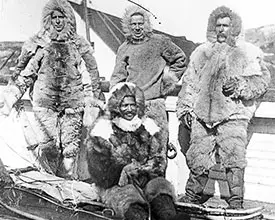 Peary and Henson proceeded forward with four Inuit men (Ooqueah, Ootah, Egingwah, and Seegloo) and a dog sled team on the last push to the pole. They raced at breakneck speeds, covering 170 miles in five days. At one point Peary was no longer able to continue on by foot so Henson journeyed ahead as his scout. As Peary’s “First Man,” Henson ventured out and realized that he had overshot his target. When he returned back he saw that his footsteps were the first at the spot. Thus, on On April 6, 1909, Henson arrived at what would later be known as Camp Jesup, 89°47′, proudly planting an American flag into the ground to signify the moment and to make a claim of having been the first people to make it to the pole. Perry arrived 45 minutes later and planted an American flag atop his igloo. Peary was apparently angered by the fact that Henson had reached the poll and planted the flag before him. “From the time we knew we were at the Pole, Commander Peary scarcely spoke to me,” Henson later wrote. “It nearly broke my heart … that he would rise in the morning and slip away on the homeward trail without rapping on the ice for me, as was the established custom.”
Peary and Henson proceeded forward with four Inuit men (Ooqueah, Ootah, Egingwah, and Seegloo) and a dog sled team on the last push to the pole. They raced at breakneck speeds, covering 170 miles in five days. At one point Peary was no longer able to continue on by foot so Henson journeyed ahead as his scout. As Peary’s “First Man,” Henson ventured out and realized that he had overshot his target. When he returned back he saw that his footsteps were the first at the spot. Thus, on On April 6, 1909, Henson arrived at what would later be known as Camp Jesup, 89°47′, proudly planting an American flag into the ground to signify the moment and to make a claim of having been the first people to make it to the pole. Perry arrived 45 minutes later and planted an American flag atop his igloo. Peary was apparently angered by the fact that Henson had reached the poll and planted the flag before him. “From the time we knew we were at the Pole, Commander Peary scarcely spoke to me,” Henson later wrote. “It nearly broke my heart … that he would rise in the morning and slip away on the homeward trail without rapping on the ice for me, as was the established custom.”
Henson described his journeys in a book entitled “A Negro Explorer at the North Pole'” which was published in 1912. In the book he modestly described himself as a “general assistant, skilled craftsperson, interpreter, and laborer” and described his relationship with Perry and the Inuit. Years later he would co-author a book with Bradley Robinson as a biography of his his.
“Henson must go all the way. I can’t make it there without him.” – Commander Robert E. Peary
Upon return to the United States, Perry was met with great fanfare. In those days, expeditions of this type into vast uncharted land were considered extremely dangerous. A modern parallel can be seen in the numerous failed attempts each year to scale Mount Everest and the accompanying death toll. Thus Perry was celebrated everywhere he went. Henson, on the other hand, was largely forgotten and ignored, despite his efforts that made the trip a success. He was however, acknowledged within the Black community, including a ceremony on October 19, 1909, where he was presented with a gold watch and chain by the Colored Citizens of New York. He quietly settled into a position on the staff of the United States Customs House in New York, where he stayed for 30 years. Twenty eight years after his famous journey, however, Henson was invited to become a member of the prestigious Explorers Club in New York City. The Explorers Club is a professional society dedicated to the advancement of field research. In 1948, he was made an “Honorary Member”, a group in which there were no more than 20 living members in the world. In 1944, the United States Congressed awarded Henson and several others who accompanied the Peary expedition with a duplicate of the silver “Peary Polar Expedition Medal” that had been previously issued to the Admiral. Henson was formally honored by Presidents Harry Truman and Dwight Eisenhower for his exploits and he received honorary doctoral degrees from Howard University and Morgan State University.
Matthew Henson passed away in the Bronx, New York on March 9, 1955 at the age of 88. He was survived by his wife Lucy and his son Anauakaq, and was buried at the Woodlawn Cemetery in the Bronx. In 1986, he and Peary were honored with a postage stamp bearing their images and in 1988, in recognition to his contributions to Arctic exploration, Matthew and Lucy Henson were reinterred at Arlington National Cemetery.
In 1996, the United States Navy commissioned the USNS Henson, a Pathfinder class Oceanographic Survey Ship and in 2000, the National Geographic Society awarded him the Hubbard Medal posthumously. Finally, the state of Maryland has honored him by naming several schools and a state park after him.
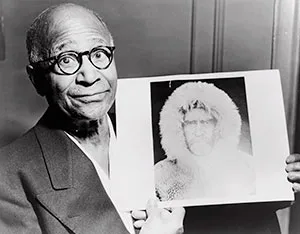 The fact that Matthew Henson took part in some of the most harrowing and celebrated expeditions in modern history is by itself noteworthy, but the fact that he was so important to the success of the campaigns as a Black man in the pre-Civil Rights era is especially significant. Throughout the years, controversy has surrounded Peary and Henson’s journey to the North Pole, with at least one other person claiming to has reached there first. No one, however, argues that reaching the point that they did was anything less than heroic. Thus, Matthew Henson is truly a Great Black Hero.
The fact that Matthew Henson took part in some of the most harrowing and celebrated expeditions in modern history is by itself noteworthy, but the fact that he was so important to the success of the campaigns as a Black man in the pre-Civil Rights era is especially significant. Throughout the years, controversy has surrounded Peary and Henson’s journey to the North Pole, with at least one other person claiming to has reached there first. No one, however, argues that reaching the point that they did was anything less than heroic. Thus, Matthew Henson is truly a Great Black Hero.
Who Was the First Person to Reach the North Pole? | National Geographic
Sources:
Matthew Henson, Wikipedia – http://en.wikipedia.org/wiki/Matthew_Henson
Matthew Henson Biography – http://www.biography.com/people/matthew-henson-9335648
African-American North Pole Explorer Matthew Henson, National Geographic – http://news.nationalgeographic.com/news/2003/01/0110_030113_henson.html
Matthew Henson – http://www.matthewhenson.com/
Ahdoolo The Biography Of Matthew A. Henson – https://archive.org/stream/ahdoolothebiogra007417mbp/ahdoolothebiogra007417mbp_djvu.txt
Matthew Henson: Arctic Explorer – http://www.unmuseum.org/henson.htm
The Legacy of Arctic Explorer Matthew Henson – http://adventureblog.nationalgeographic.com/2014/02/28/the-legacy-of-arctic-explorer-matthew-henson/

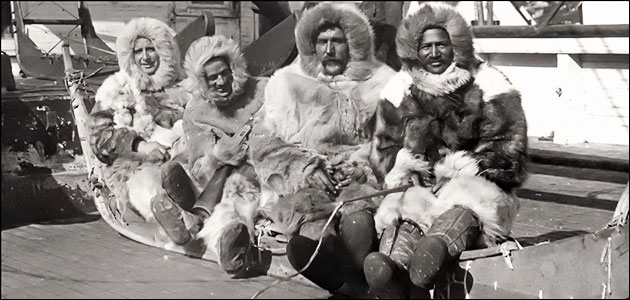
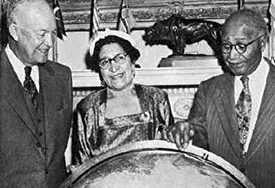
 Like Us on Facebook
Like Us on Facebook Tweet Us on Twitter
Tweet Us on Twitter Watch Us on YouTube
Watch Us on YouTube Pin Us on Pinterest
Pin Us on Pinterest Link to Us on LinkedIn
Link to Us on LinkedIn Adscape International, LLC
Adscape International, LLC PO Box 173 Brandywine, MD 20613
PO Box 173 Brandywine, MD 20613 240-244-9660
240-244-9660
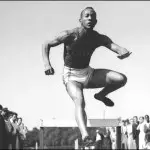
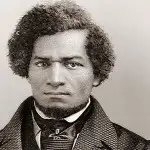
Leave a Reply
Want to join the discussion?Feel free to contribute!